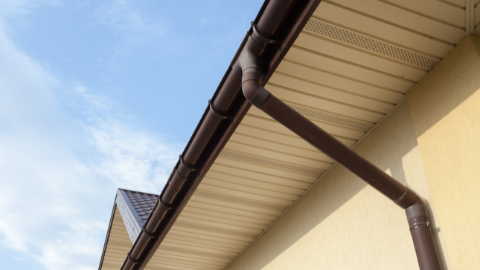Your home drainage system is key to your home working correctly. When it is failing, the rest of your home will feel it. Your toilets, baths, showers, and sinks all are interconnected. If there is a failure in the chain, it affects all of it.
As the owner and employee of M. Taylor Enterprises, I have worked on thousands of home drainage systems in Central Maryland for many years. I have seen every possible issue and breakdown. And, I certainly understand why my customers panic when it does break down.
Often, I will explain how their home drainage works and what we need to do to repair the link in the chain. Many of my customers want to understand how it works. Though admittedly, other customers are desperate and just want it repaired. I get that, too.
Anyway, here are the basic structures and functions of a typical home drainage system:
- The supply and drainage subsystems work together. They have bridges between the supply and drainage subsystems called “fixtures.”
- Fixtures draw in freshwater and also release wastewater. Fixtures include kitchen and bathroom sinks, bathtubs and showers, washing machines, toilets, and outside faucets. These fixtures work together to keep supply and wastewater apart.
- A trap is a curved pipe that keeps water inside and prevents sewer gasses from coming into your home. They are found inside kitchen cabinets or underneath the kitchen or bathroom sink plumbing.
- Drain lines are in each kitchen and bathroom plumbing fixture. Drain lines are found under sinks, bathtubs, and showers, and the toilet ties into a larger main line. Then, the main line runs water out of the home. Water comes from the local municipality. The wastewater then drains back into a sewer system with septic tanks. Septic tanks are cleaned every 10 years to prevent backup, which prevents major problems with a home’s drainage system. Toilets are self-trapped. However, bathtubs use drum traps to seal sewer gas and collect hair and dirt so drains don’t get clogged.
- Vent Pipes allow water to drain. Vents are made of rubber, lead, or sheet metal on the roof. It holds the vent pipe in place.
- Nut and Ferrule connect the traps. They are connected using a threaded fitting. The ferrule forms the seal, as the nut screws down over the ferrule forming a watertight seal preventing sewer gasses from entering your home.
- Pitch is the angle at which water flows without needing gravity. It’s essential as all sewer or septic system drainpipes, in the wall or underground, have some type of pitch and are sloped releasing wastewater to drain out of the home.
- Shutoff valves are there to close the main shutoff to repair them. The water supply to the fixture or the main shutoff must be closed to do any plumbing repairs.
Well, now you know the basics of your home drainage system. They all work together so you can live comfortably.
If you are having problems with your home drainage system, contact M. Taylor Enterprises for a consultation. M Taylor Enterprise can inspect your home drainage system to see if you have any issues. Call our home drainage repair experts in Maryland at (301) 649-3406 or matt@mtaylorenterprise.com. We will do a free consultation, make recommendations then do any needed repairs done quickly and efficiently.
We serve Montgomery County and parts of Prince George’s and Howard Counties.






